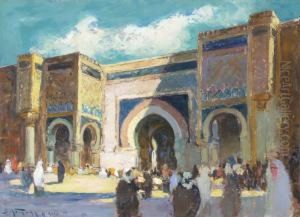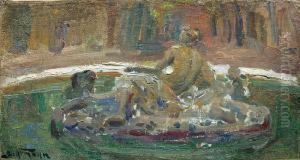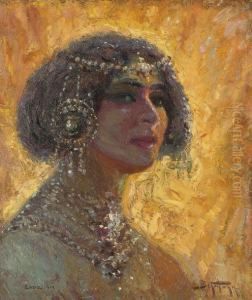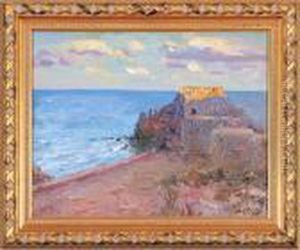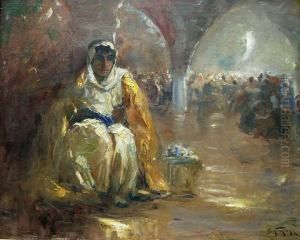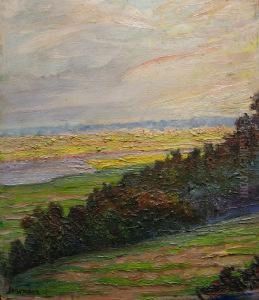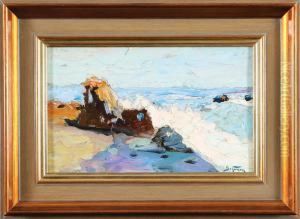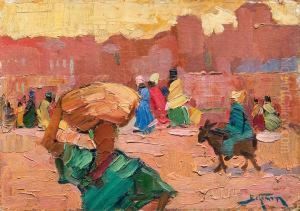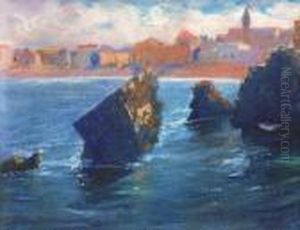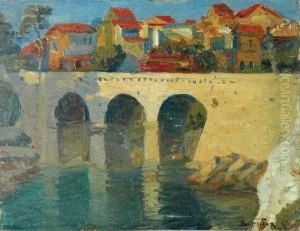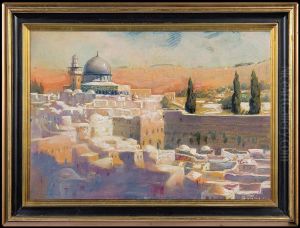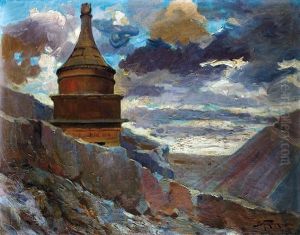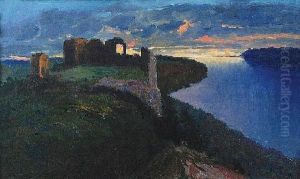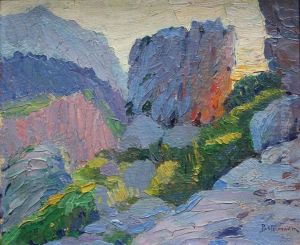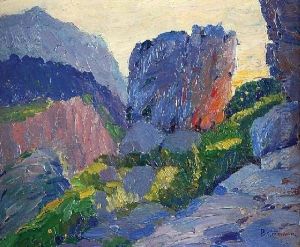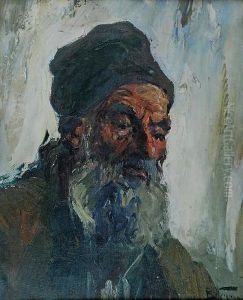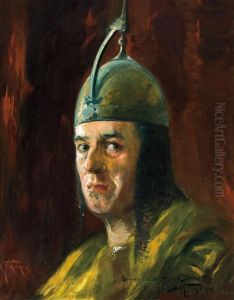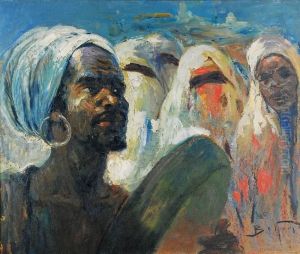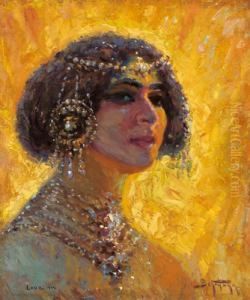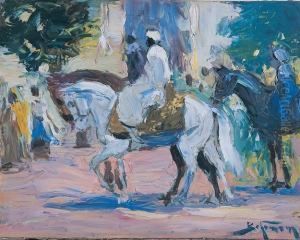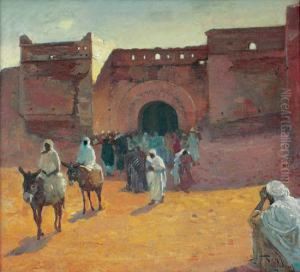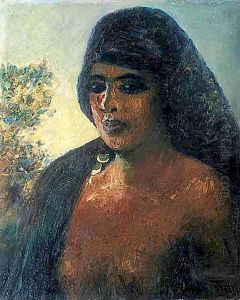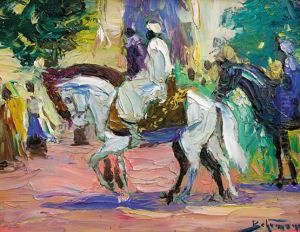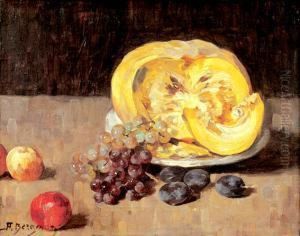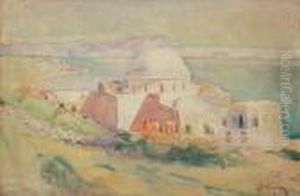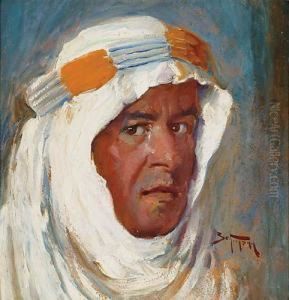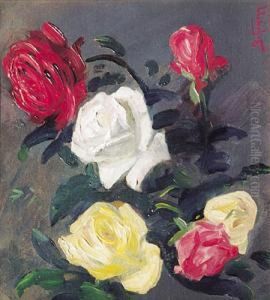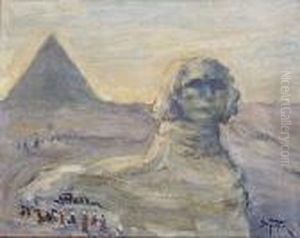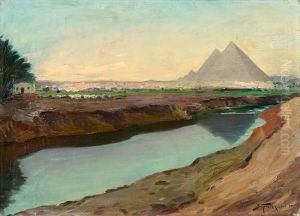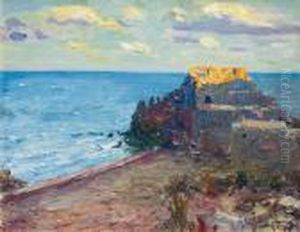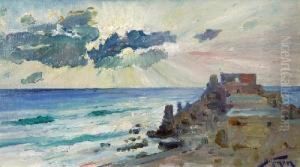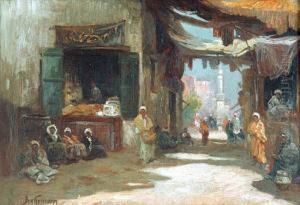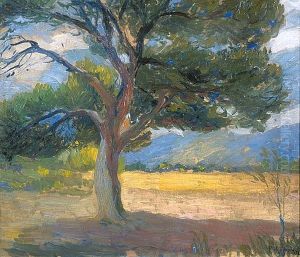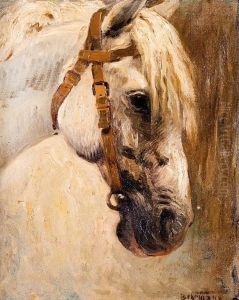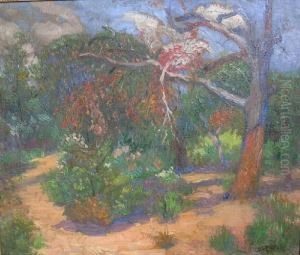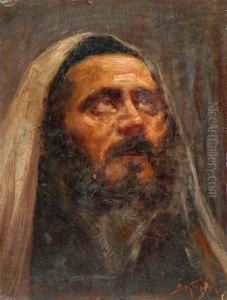Adolf, Abraham Behrman Paintings
Abraham Behrman, also known as Adolf Behrman, was a Jewish-Polish painter born in 1876 in Szczebrzeszyn, then part of the Russian Empire, now Poland. He was recognized for his portraits, landscapes, and depictions of Jewish life, particularly in the shtetls, the small towns with large Jewish populations in Eastern Europe.
Behrman studied at the Kraków Academy of Fine Arts and later in Munich and Paris, which was typical for Polish artists of his time who wanted to gain a comprehensive art education. His time in Paris was particularly influential, as he was exposed to various art movements and styles that were central to the development of modern art at the turn of the 20th century.
Despite his exposure to modernist trends, Behrman remained largely a realist in his stylistic approach, with a particular interest in capturing the nuances of everyday life. His portraits often reflect a deep psychological insight into his subjects, while his depictions of Jewish shtetl life are valued for their historical and cultural significance, offering a window into a way of life that was largely destroyed during the Holocaust.
With the outbreak of World War II and the rise of Nazi occupation, Behrman, being Jewish, found himself in a perilous position. He was forced to live in the Warsaw Ghetto, where he continued to paint until his death in 1943. The exact circumstances of his death are not well documented, but it is believed that he perished during the Holocaust.
Behrman's works are a testament to the vibrant Jewish culture of pre-war Eastern Europe and are held in high regard. Some of his pieces are preserved in museums and private collections, serving as a poignant reminder of the artistic talents that were lost during the war.
